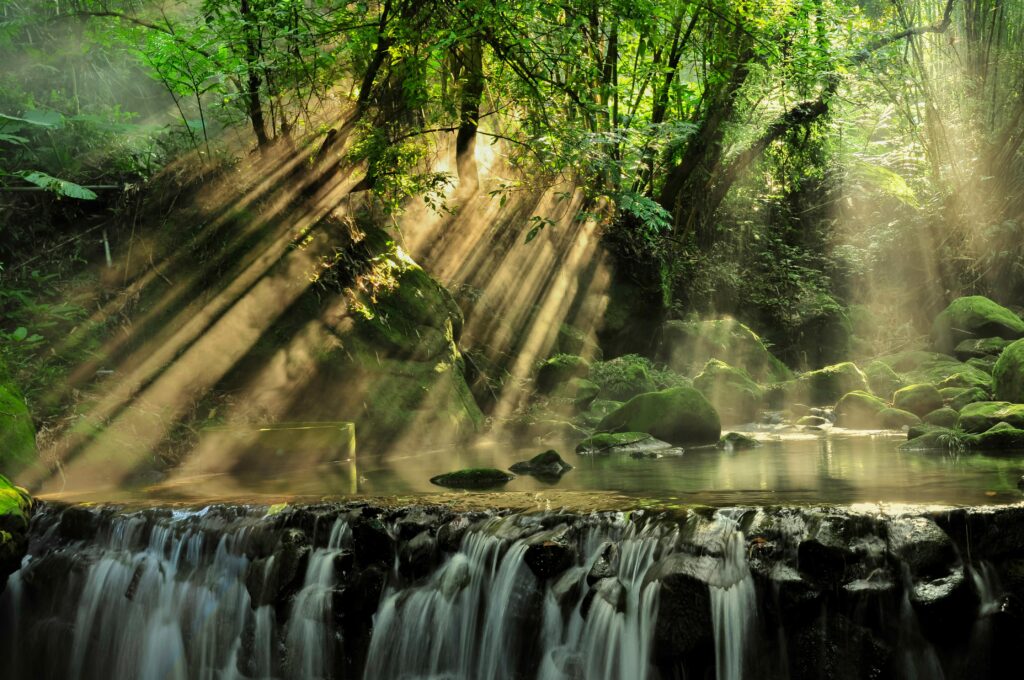Rainforest Awakening

Back to Life
Spring doesn’t look the same in the rainforest. There’s no frost to melt, no snow to disappear, no bare branches to reclaim. But the change is still there — subtle, deep, and powerful. Rainfall patterns shift. Humidity rises. A new rhythm begins, and the forest responds as it always has: with sound, color, and life layered on life.
Leaves drip. Soil steams. Insects hum louder. Frogs begin to call, long before they’re seen. In the canopy, monkeys move in tighter groups, chasing fruiting trees just days from ripeness. Orchids bloom from cracks in branches. Moss thickens. Ants open new trails along bark slick with mist. What looks like chaos is a system restarting itself with near-perfect timing.
In tropical rainforests, seasons are often defined less by temperature and more by rain — and spring, in many regions, is the return of water. Not the hard storms of summer, but the steady kind that stirs frogs from soil and triggers eggs to hatch. With it comes noise: the rise of mating calls, wingbeats, splashes, and rustling in every direction. It’s hard to know where to look — because everything is moving at once.
Reptiles emerge onto warm stones after hiding through cooler months. Birds flash between layers of leaves, some returning from distant places, others preparing nests in impossible locations. Jaguars and ocelots move quieter now, their prey more active, the undergrowth more forgiving. Sloths descend to the forest floor to breed or give birth — a rare and cautious ritual. Life here doesn’t just wake up — it surges.
The rainforest doesn’t burst into spring. It uncoils. Every hour brings a different soundscape. A new scent. A sudden downpour. A rare butterfly. A chorus of frogs at dusk. And in that constant shift, there’s a feeling: the rainforest isn’t waking up — it never slept. It was just waiting. And now, it’s ready to begin again.
Leaves drip. Soil steams. Insects hum louder. Frogs begin to call, long before they’re seen. In the canopy, monkeys move in tighter groups, chasing fruiting trees just days from ripeness. Orchids bloom from cracks in branches. Moss thickens. Ants open new trails along bark slick with mist. What looks like chaos is a system restarting itself with near-perfect timing.
In tropical rainforests, seasons are often defined less by temperature and more by rain — and spring, in many regions, is the return of water. Not the hard storms of summer, but the steady kind that stirs frogs from soil and triggers eggs to hatch. With it comes noise: the rise of mating calls, wingbeats, splashes, and rustling in every direction. It’s hard to know where to look — because everything is moving at once.
Reptiles emerge onto warm stones after hiding through cooler months. Birds flash between layers of leaves, some returning from distant places, others preparing nests in impossible locations. Jaguars and ocelots move quieter now, their prey more active, the undergrowth more forgiving. Sloths descend to the forest floor to breed or give birth — a rare and cautious ritual. Life here doesn’t just wake up — it surges.
The rainforest doesn’t burst into spring. It uncoils. Every hour brings a different soundscape. A new scent. A sudden downpour. A rare butterfly. A chorus of frogs at dusk. And in that constant shift, there’s a feeling: the rainforest isn’t waking up — it never slept. It was just waiting. And now, it’s ready to begin again.
